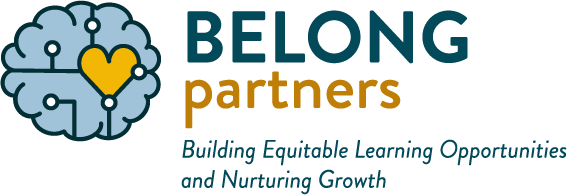March includes both Neurodiversity Celebration Week and Brain Science Awareness Week.
Helping students learn about neurodiversity and brain science helps to create an inclusive classroom community while building empathy and self-awareness. Here are a few ways you and your students can explore brain science and neurodiversity.
 Learn About Neurodiversity
Learn About Neurodiversity
According to this Harvard Medical School article, neurodiversity “describes the idea that people experience and interact with the world around them in many ways; there is no one “right” way of thinking, learning, and behaving, and differences are not viewed as deficits.”
Approximately 15-20% of the population has a neurological difference, and oftentimes the public education system is not designed to meet the needs of neurodivergent students. Unlearning myths about neurodivergent students is helpful for all students and the whole school community.
Sound Discipline had the opportunity to partner with Michelle Ucar and Karen Wiseman, authors of This is What ADHD Looks Like, one in a series of books designed to support general education teachers in helping their students understand and connect effectively with students who have autism, dyslexia, ADHD, or are blind. These picture books have a strengths lens and give educators and young people an understanding of walking in the shoes of neurodivergent students and strategies for learning and being in community with them.
- Check out these engaging lessons designed in partnership with the book authors to build understanding and skills to support neurodivergent students.
Educate Your School Community
Uplift student voices and perspectives. We can learn a lot from listening to the perspectives of neurodivergent students. We can carry the value of listening to neurodivergent students into our classrooms, IEP and 504 Plan meetings, and curriculum content.
- Check out this video created by a student with dyslexia.
Unlearning biases about neurodiversity is most effective when done school wide as a learning community. Learning about brain science holistically can be an effective entry point to destigmatize neurodiversity in your classroom and school community.
- Here are some tips about how to create a more inclusive school environment.
- Some specific activities your school can try.
Best practices for supporting neurodiverse students are relatively new, and we all have lots to unlearn from socialized messaging about neurodiversity. All students deserve an inclusive learning environment where they feel like they belong and matter, and unlearning myths is one way we can co-create inclusive classrooms as educators.
Highlight Neurodiverse Role Models
Students thrive when they see themselves reflected in the world around them.
- Weave in neurodiverse role models in your lesson plans and classroom curriculum.
- Here are a few more famous neurodivergent figures to include in your classroom posters and conversations.
Providing ample information about brain science and neurodiversity to all students, educators, and families is the most effective way to unlearn biases about neurodiverse students and equip your school with tools for being an inclusive learning community.
